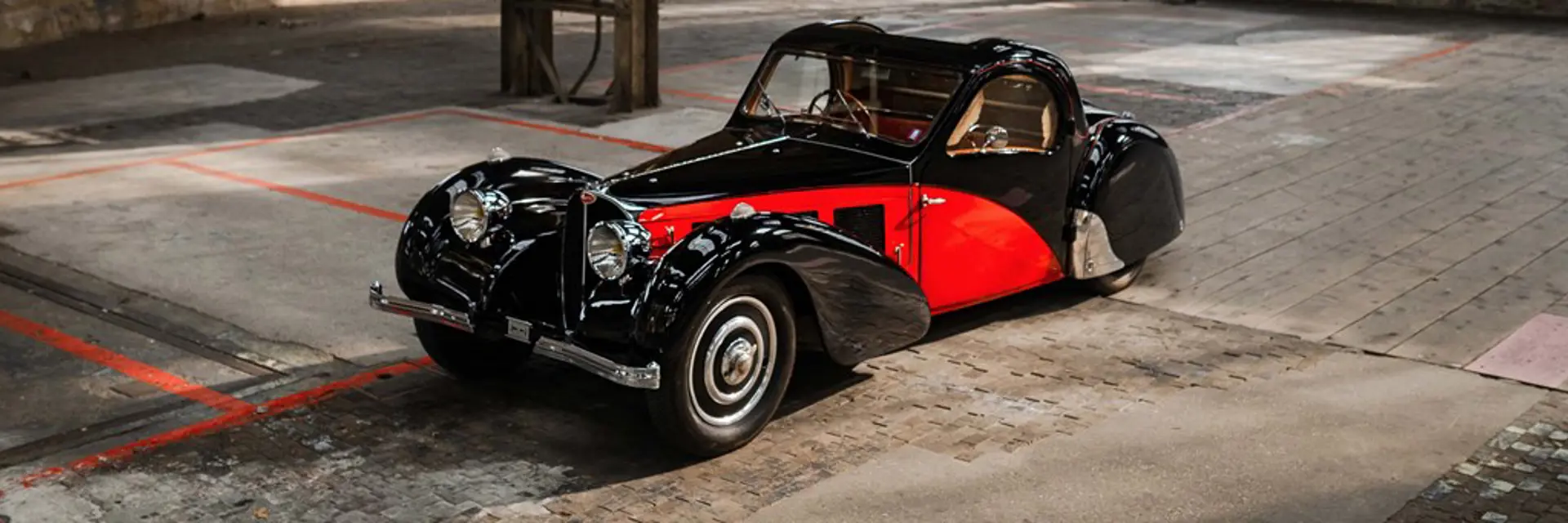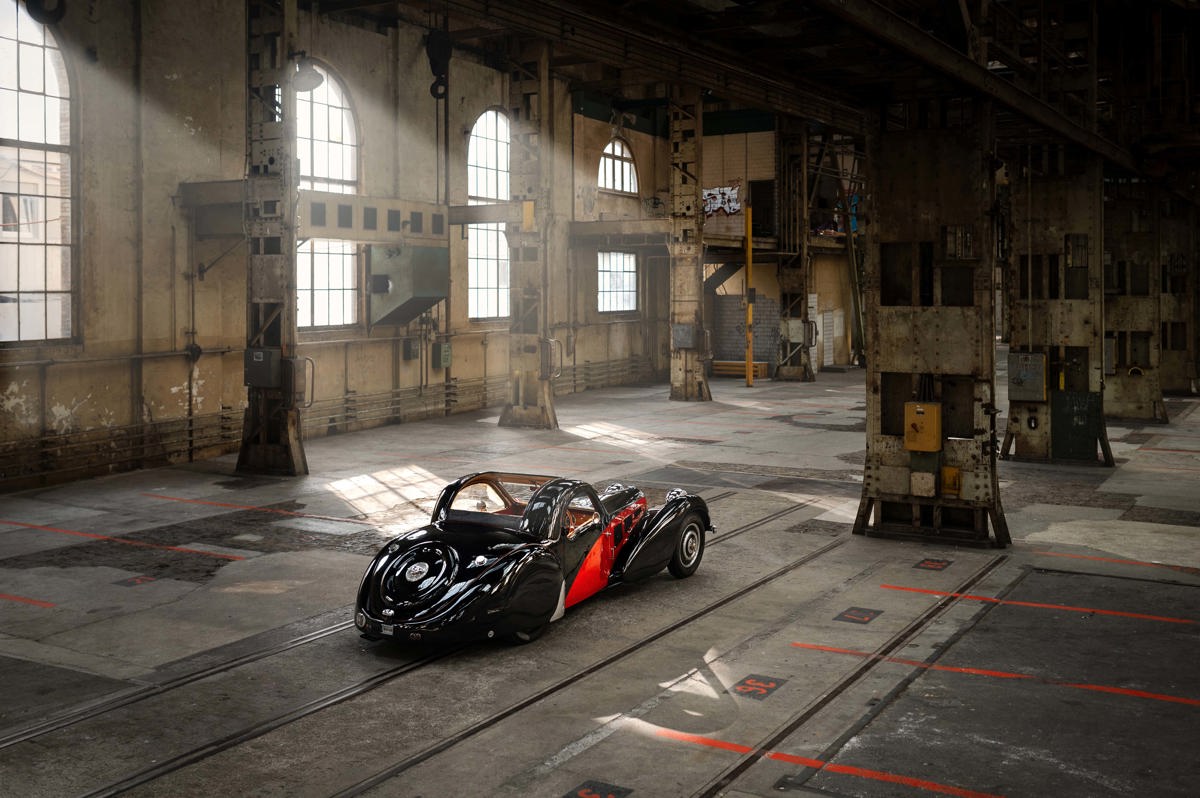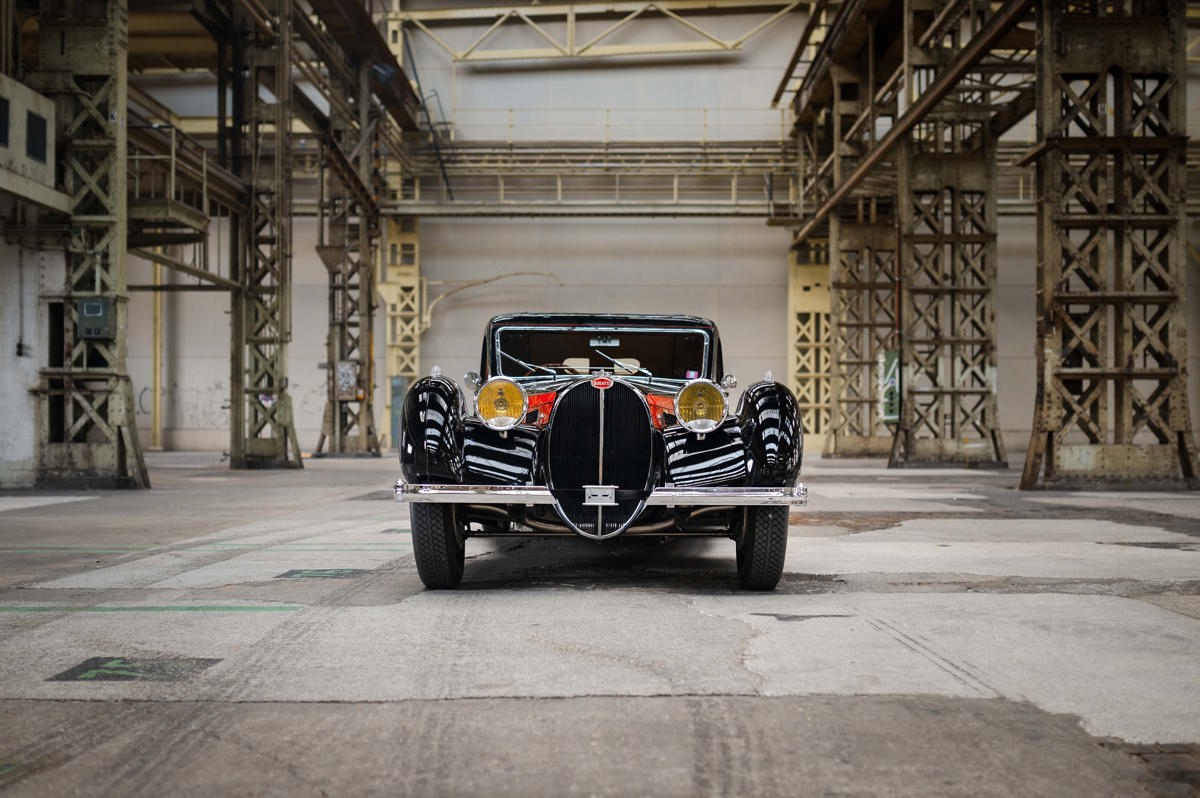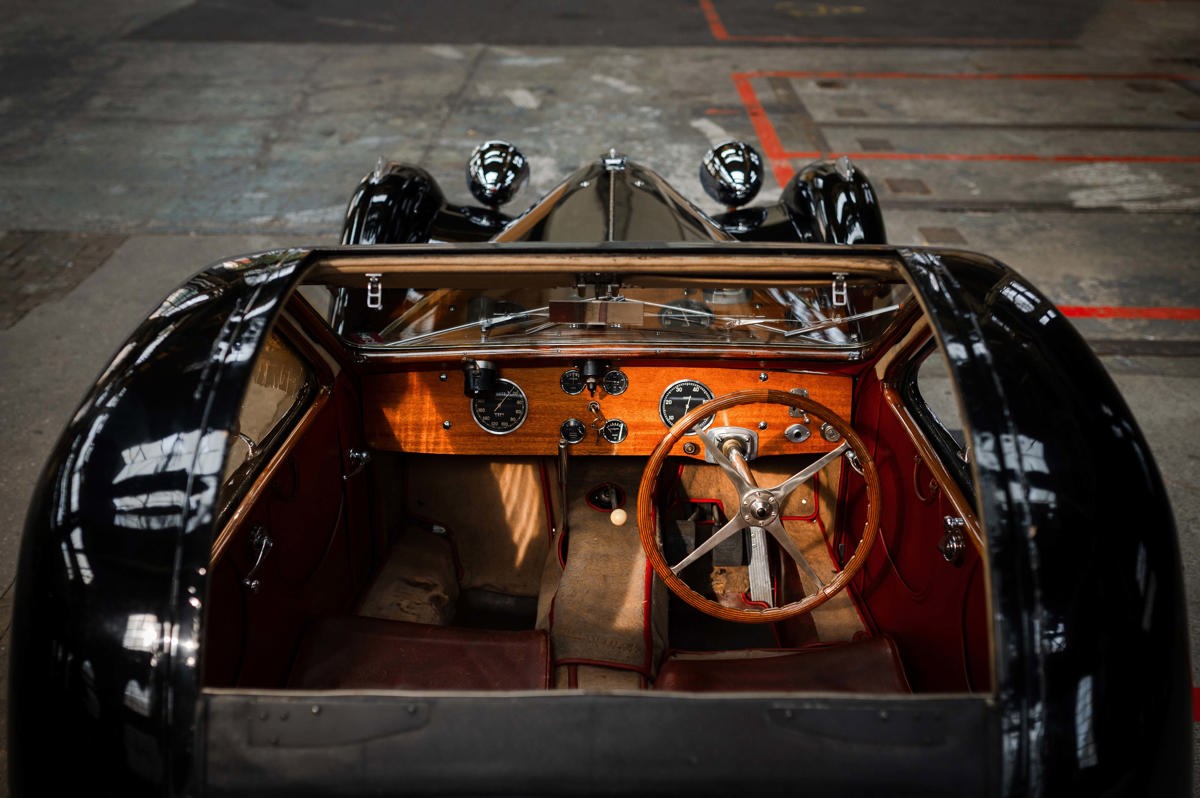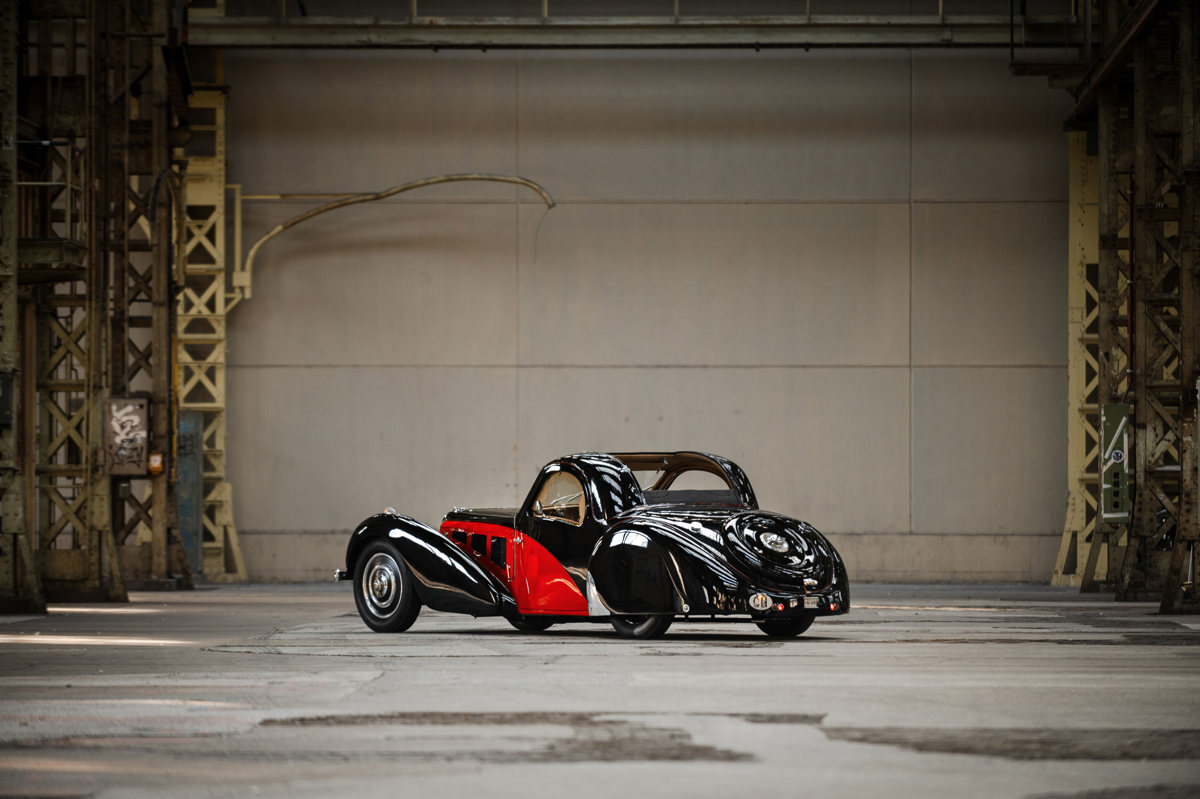Ettore Bugatti was a visionary, a racer, and engineer. As widely acclaimed as he was in his era, even the Alcase-based automotive empresario could not have imagined the power his marque still holds over anyone with an interest in internal combustion 121 years on from inception. With the newest Bugatti Mistral, just released at the Pebble Beach Concours d’Elegance, sending off the W-16 powerplant in style, the future of the world’s most prestigious car brand is certain to represent the pinnacle of both exclusivity and unbridled performance.
That reputation for excellence was not established in the modern era alone. Before World War II, low-production pieces of art rolled out of the Bugatti workshop in Molsheim. Handmade under the watchful eye of Jean Bugatti, Ettore’s son, the pre-war products that bear the famous enamel macron badge are known for the thoughtful design expressed in each component. From the brand’s supercharged powerplants to the novel roll-back top seen on the ultra-rare Atalante coupe, certain highlights of Bugatti history are just as desirable to collectors today as they were futuristic in their era. Now, with RM Sotheby’s next auction in Switzerland fast approaching, one of the most stunning Surbaissé-chassis Bugatti sports cars ever made is set to cross the block on 9 September 2022. Due in part to its one-of-seventeen rarity, this Type 57S is without a doubt the headliner for St. Moritz:
1936 Bugatti Type 57S Atalante
Estimate: CHF10,000,000 - CHF12,000,000
In Bugatti parlance, every letter and numeral in a model name is important. Being a Type 57, this chassis represented the ultimate development of the pre-war road cars. Though most pre-war cars ride sky-high, the pass-through rear axle on the Type 57 chassis established a sporting stance for the model. As any connoisseur knows, the “S” of this Type 57S stands for Surbaissé, meaning that the front axels were articulated in two halves, hanging beneath the frame. This setup allowed all models of the Type 57S to ride lower to the ground, appearing to hover just above the surface of the road—especially on examples like this Type 57S Atalante with its covered rear wheel spats.
Production for the Type 57 initially started in 1934, with Ettore Bugatti and his team intending to create five separate versions, all built for differing requirements; one of which was the Atalante. With inspiration for the 57S stemming from the supremely successful Type 59 Grand Prix car, the 57S featured a lowered and shortened body, in addition to a dry-sump engine oil system. This meant it was the supercar of the day, boasting strong performance and incredible build quality throughout.
In a fascinating turn of events, a heavily modified Type 57G ‘Tank’ with 57S underpinnings led Bugatti to its first victory at Le Mans in 1937—setting an average speed record for the time at the event of 85 mph. Unfortunately, the untimely death of Jean Bugatti in 1939, followed by Ettore’s passing in 1947, meant the halcyon days of Bugatti in the 1920s and 1930s would end.
In Bugatti’s heyday, the firm was not only constructing the underbody, chassis, and engine, but they were coachbuilding them too—an uncommon move for a car builder in the era.
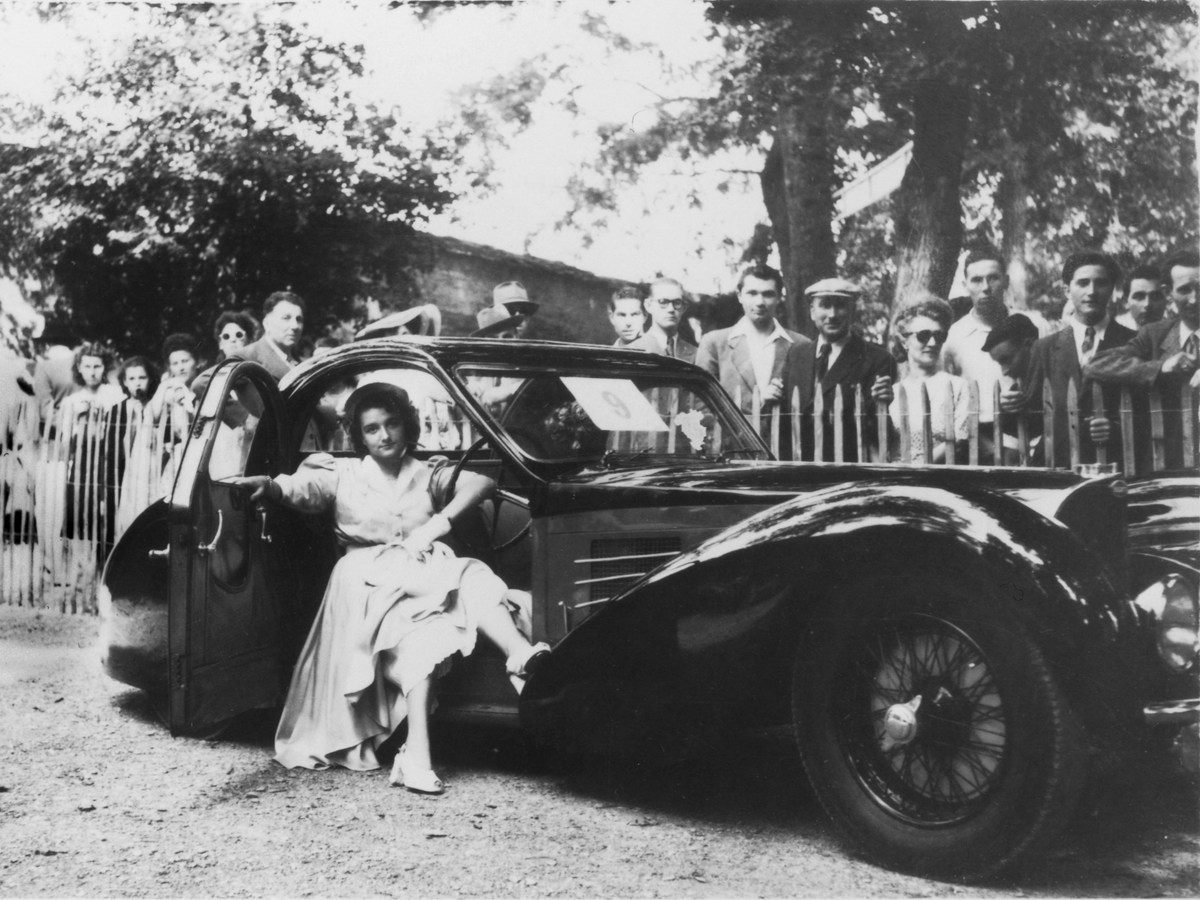 Mme Monique Violland with the Bugatti Type 57S Atalante. Courtesy of Pierre-Yves Laugier.
Mme Monique Violland with the Bugatti Type 57S Atalante. Courtesy of Pierre-Yves Laugier.
This fine example, chassis number 57384, is extraordinarily rare, being the very first Type 57S Atalante to leave the factory in Molsheim, France. It has since lived a storied life. This included residing under planks of wood in the uncle of the owner’s barn to hide it during the outbreak of the second world war. Incredibly, after its rediscovery, this example is believed to have started on the first try, with the help of a new battery. It was returned to its previous owner. During a restoration between 1971 and 1972, a highly desirable Roots-type supercharger was installed, taking this Type 57S to the 200 horsepower “SC” specification. The past three decades of ownership have carried with it many presentations on concours lawns the world over. This includes a gathering at Pebble Beach of Bugatti icons in 2003. It collected an award at the Louis-Vuitton Classic a year later.
Bugatti Type 57S Atalantes are rarely seen on the open market. This striking two-tone 57S will certainly garner attention and admiration whenever it is seen in the public eye. The Type 57 was the model which helped Bugatti create its legend in Molsheim.
For an in-depth history on this important Atalante as well as a detailed photo gallery showing period images, please click this link and be sure to check back in on 9 September 2022 to watch this Bugatti cross the block in St. Moritz.

